A Three-Stage Optimal Approach for Power System Economic Dispatch Considering Microgrids
Abstract
:1. Introduction
2. Problem Description and Formula Derivation
2.1. System Structure
2.2. ED of the Main Power Grid
2.3. ED in a Microgrid
2.4. ED Integrated with Main Power Grid and MGs
- Stage I: ED in main power grid
- Stage II: ED in each MG
- Stage III: integrated ED of main power grid and MGs
2.4.1. Thermal Unit in Main Power Grid
2.4.2. NonRenewable Unit in MGs
2.4.3. Linear Programing Model of ED
3. Solution Procedure
3.1. Stage I
3.1.1. Models of Transmission Line Loss and Line Flow
3.1.2. Formula of ITL and Penalty Factor
3.1.3. Model of JBDF-Based ED
3.2. Stage II
3.3. Stage III
4. Numerical Results and Discussion
5. Conclusions
Acknowledgments
Author Contributions
Conflicts of Interest
References
- Milestones: Pearl Street Station. Available online: http://www.ieeeghn.org/wiki/index.php/Milestones:Pearl_Street_Station (accessed on 12 August 2016).
- Gomez-Sanz, J.J.; Garcia-Rodriguez, S.; Cuartero-Soler, N.; Hernandez-Callejo, L. Reviewing Microgrids from a Multi-Agent Systems Perspective. Energies 2014, 7, 3355–3382. [Google Scholar] [CrossRef]
- Lasseter, R.H. Smart Distribution: Coupled Microgrids. IEEE Power Energy Mag. 2011, 99, 1074–1082. [Google Scholar] [CrossRef]
- Smart Grids European Technology Platform. Available online: http://www.smartgrids.eu/ (accessed on 12 August 2016).
- Acha, E.; Kazemtabrizi, B. A New STATCOM Model for Power Flows Using the Newton-Raphson Method. IEEE Trans. Power Syst. 2013, 28, 2455–2465. [Google Scholar] [CrossRef]
- Chai, R.; Zhang, B.; Dou, J.; Hao, Z.; Zheng, T. Unified Power Flow Algorithm Based on the NR Method for Hybrid ACIDC Grids Incorporating VSCs. IEEE Trans. Power Syst. 2015, 31, 4310–4318. [Google Scholar] [CrossRef]
- Kim, S. Accuracy Enhancement of Mixed Power Flow Analysis Using a Modified DC Model. Energies 2016, 9, 776. [Google Scholar] [CrossRef]
- Raygani, S.V.; Tahavorgar, A.; Fazel, S.S.; Moaveni, B. Load flow analysis and future development study for an AC electric railway. IET Electr. Syst. Transp. 2012, 2, 139–147. [Google Scholar] [CrossRef]
- Soman, S.; Thomas, P.; George, J.; Ganesh, M. Prevention of blackout by an effective forced islanding and restoration scheme. In Proceedings of the 2015 International Conference on Emerging Research in Electronics, Computer Science and Technology (ICERECT), Mandya, India, 17–19 December 2015; pp. 298–303.
- Ng, W.Y. Generalized generation distribution factors for power system security evaluations. IEEE Trans. PAS 1981, PAS-100, 1001–1005. [Google Scholar] [CrossRef]
- Lin, C.E.; Chen, S.T.; Huang, C.L. A two-step sensitivity approach for real-time line flow calculation. Electr. Power Syst. Res. 1991, 21, 63–69. [Google Scholar] [CrossRef]
- Huang, W.T.; Yao, K.C. New Network Sensitivity-Based Approach for Real-Time Complex Power Flow Calculation. IET Gener. Transm. Distrib. 2012, 6, 109–120. [Google Scholar] [CrossRef]
- Sun, B.; Luh, P.B.; Jia, Q.S.; Yan, B. Event-Based Optimization within the Lagrangian Relaxation Framework for Energy Savings in HVAC Systems. IEEE Trans. Autom. Sci. Eng. 2015, 12, 1396–1406. [Google Scholar] [CrossRef]
- Guo, Y.; Wu, W.; Zhang, B.; Sun, H. A Fast Solution for the Lagrange Multiplier-Based Electric Power Network Parameter Error Identification Model. Energies 2014, 7, 1288–1299. [Google Scholar] [CrossRef]
- Marlon, C.; Osvaldo, A. Economic Dispatch of Energy and Reserve in Competitive Markets Using Meta-heuristic Algorithms. IEEE Latin Am. Trans. 2013, 11, 473–478. [Google Scholar]
- Soroudi, A.; Rabiee, A. Optimal multi-area generation schedule considering renewable resources mix: A real-time approach. IET Gener. Transm. Distrib. 2013, 7, 1011–1026. [Google Scholar] [CrossRef]
- Niu, Q.; Zhou, Z.; Zhang, H.-Y.; Deng, J. An Improved Quantum-Behaved Particle Swarm Optimization Method for Economic Dispatch Problems with Multiple Fuel Options and Valve-Points Effects. Energies 2012, 5, 3655–3673. [Google Scholar] [CrossRef]
- Sun, J.; Xu, W.B.; Feng, B. A Global Search Strategy of Quantum-Behaved Particle Swarm Optimization. In Proceedings of the IEEE Conference on Cybernetics and Intelligent Systems, Singapore, 1–3 December 2004; pp. 111–116.
- Cheng, W.; Zhang, H. A Dynamic Economic Dispatch Model Incorporating Wind Power Based on Chance Constrained Programming. Energies 2015, 8, 233–256. [Google Scholar] [CrossRef]
- Li, Z.; Wu, W.; Zhang, B.; Sun, H.; Guo, Q. Dynamic Economic Dispatch Using Lagrangian Relaxation With Multiplier Updates Based on a Quasi-Newton Method. IEEE Trans. Power Syst. 2013, 28, 4516–4527. [Google Scholar] [CrossRef]
- Zaman, M.F.; Elsayed, S.M.; Ray, T.; Sarker, R.A. Evolutionary Algorithms for Dynamic Economic Dispatch Problems. IEEE Trans. Power Syst. 2016, 31, 1486–1495. [Google Scholar] [CrossRef]
- Liu, Y.; Huang, G.; Cai, Y.; Dong, C. An Inexact Mix-Integer Two-Stage Linear Programming Model for Supporting the Management of a Low-Carbon Energy System in China. Energies 2011, 4, 1657–1686. [Google Scholar] [CrossRef]
- Bai, H.; Miao, S.; Ran, X.; Ye, C. Optimal Dispatch Strategy of a Virtual Power Plant Containing Battery Switch Stations in a Unified Electricity Market. Energies 2015, 8, 2268–2289. [Google Scholar] [CrossRef]
- Wood, A.J.; Wollenberg, B.F. Power Generation, Operation and Control, 2nd ed.; John Wiley: New York, NY, USA, 2007. [Google Scholar]
- Huang, W.-T.; Yao, K.-C.; Wu, C.-C. Using the Direct Search Method for Optimal Dispatch of Distributed Generation in a Medium-Voltage Microgrid. Energies 2014, 7, 8355–8373. [Google Scholar] [CrossRef]
- Power Systems Test Case Archive. Available online: http://www.ee.washington.edu/research/pstca/ (accessed on 12 August 2016).
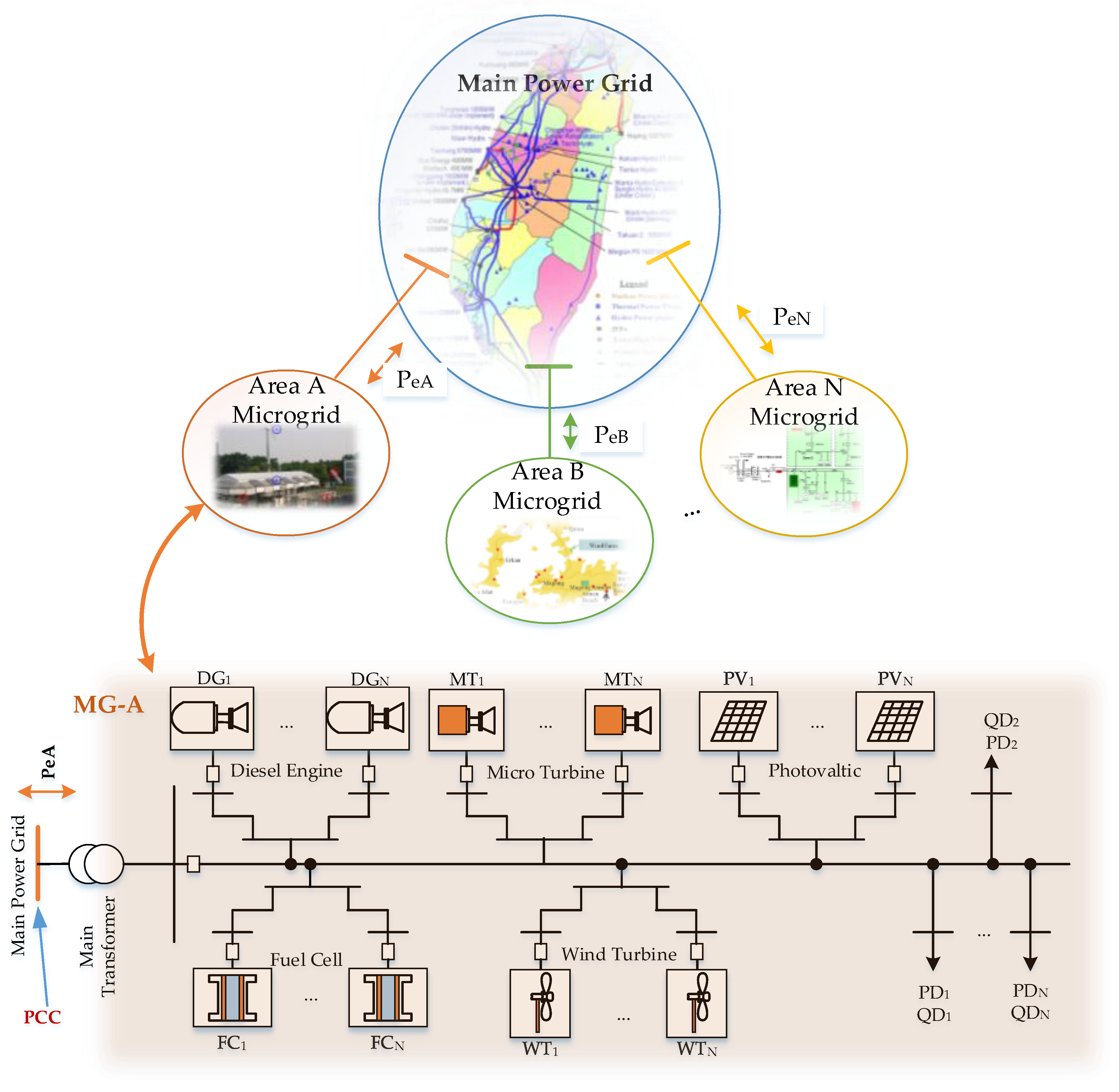

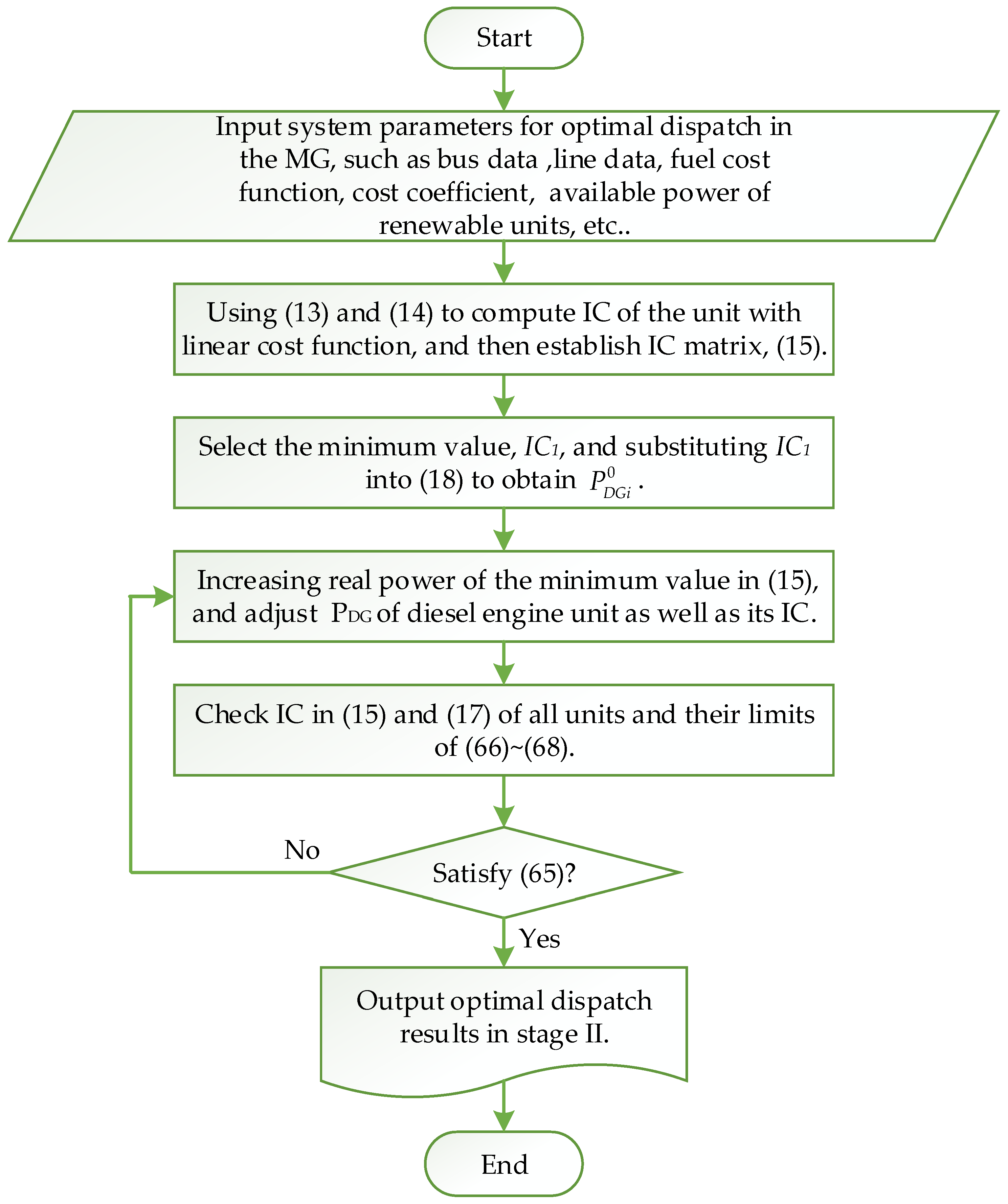
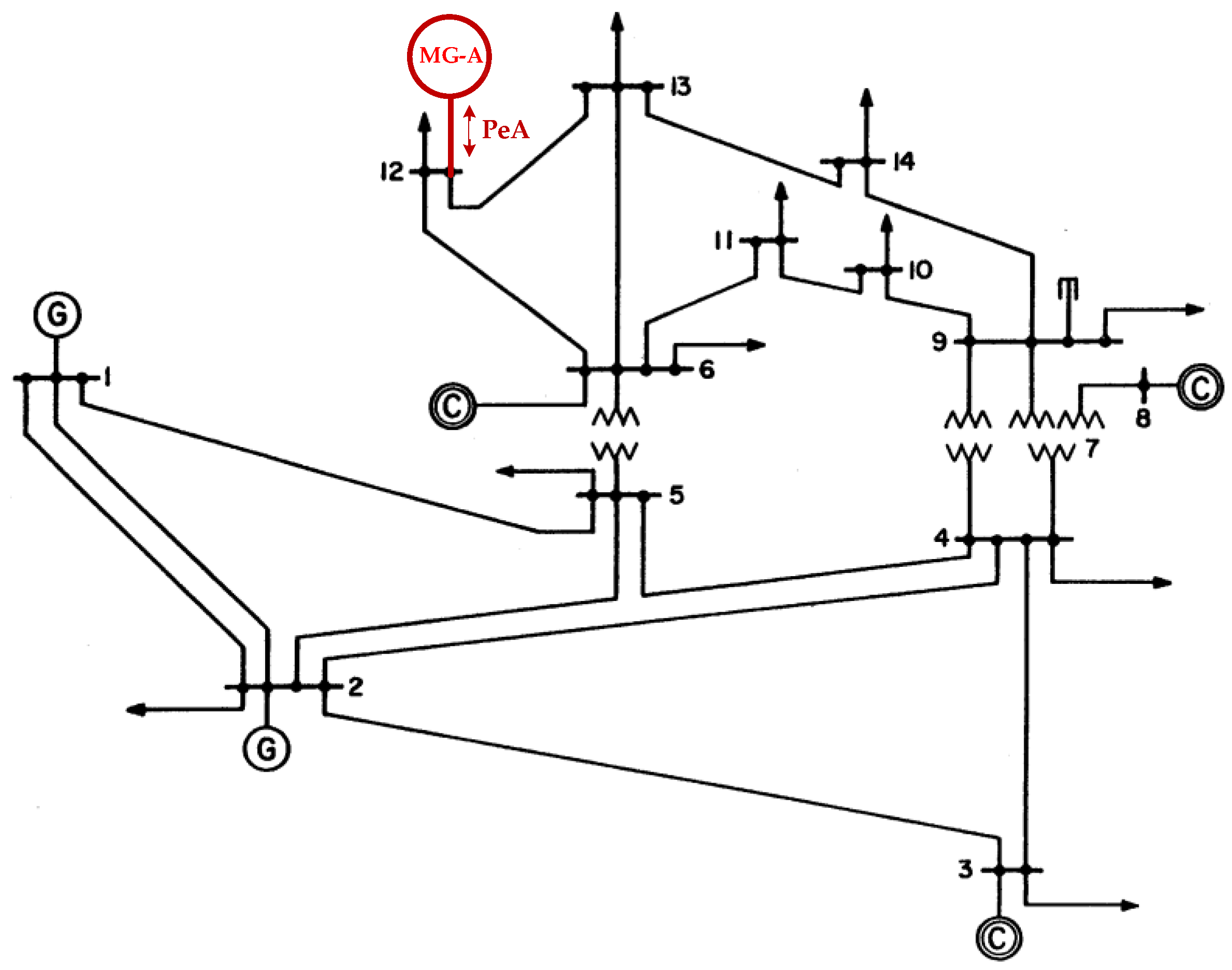
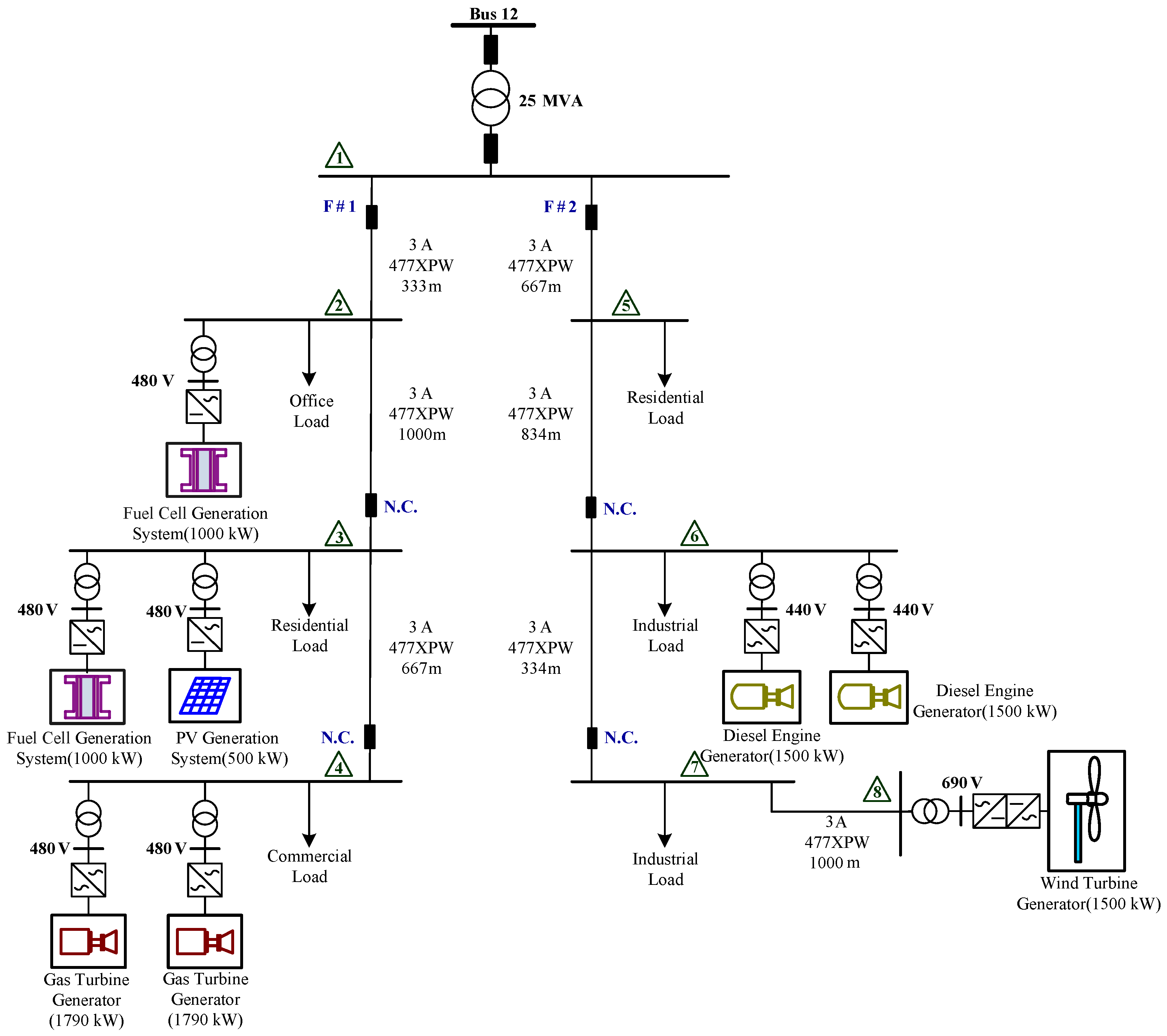
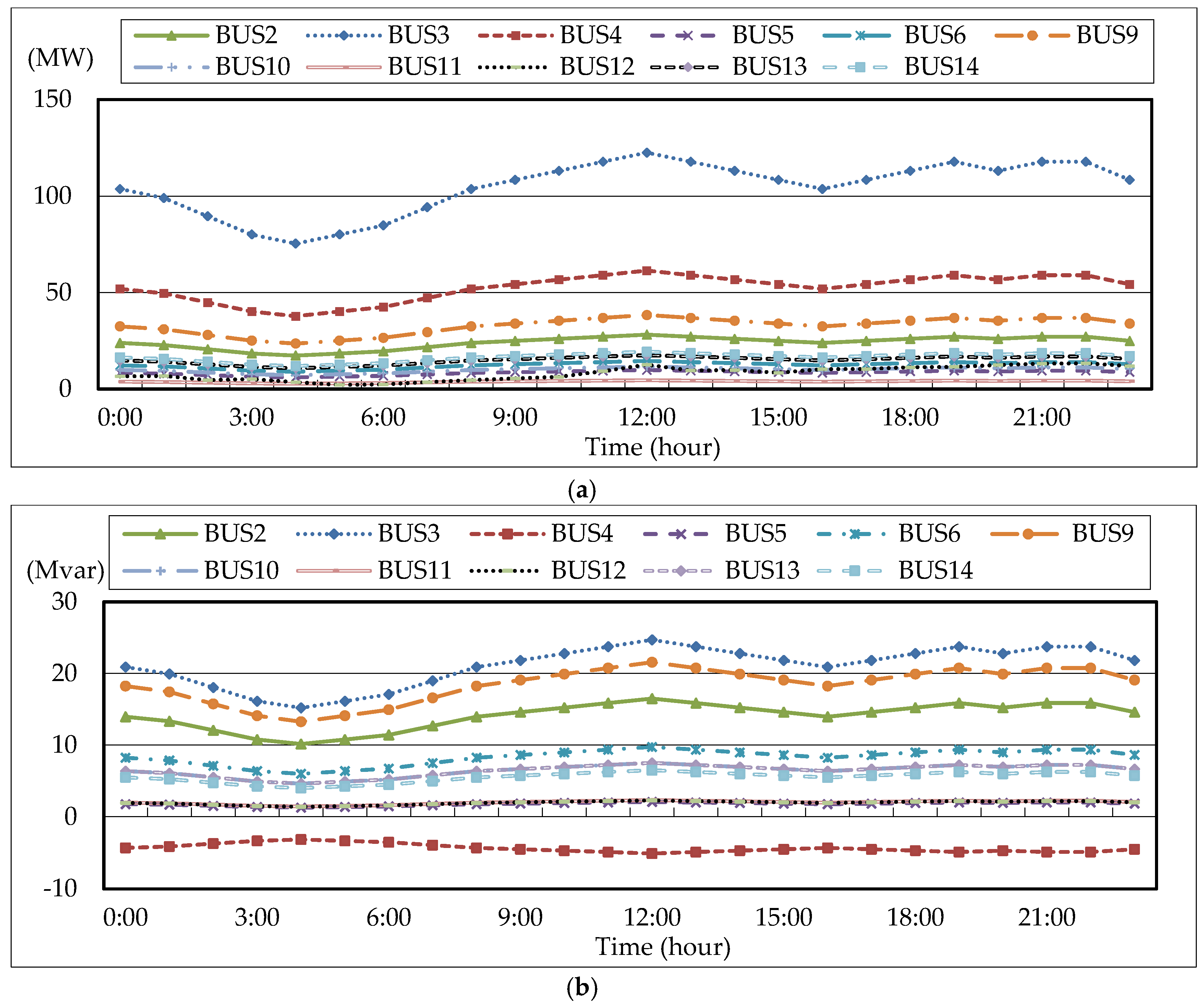




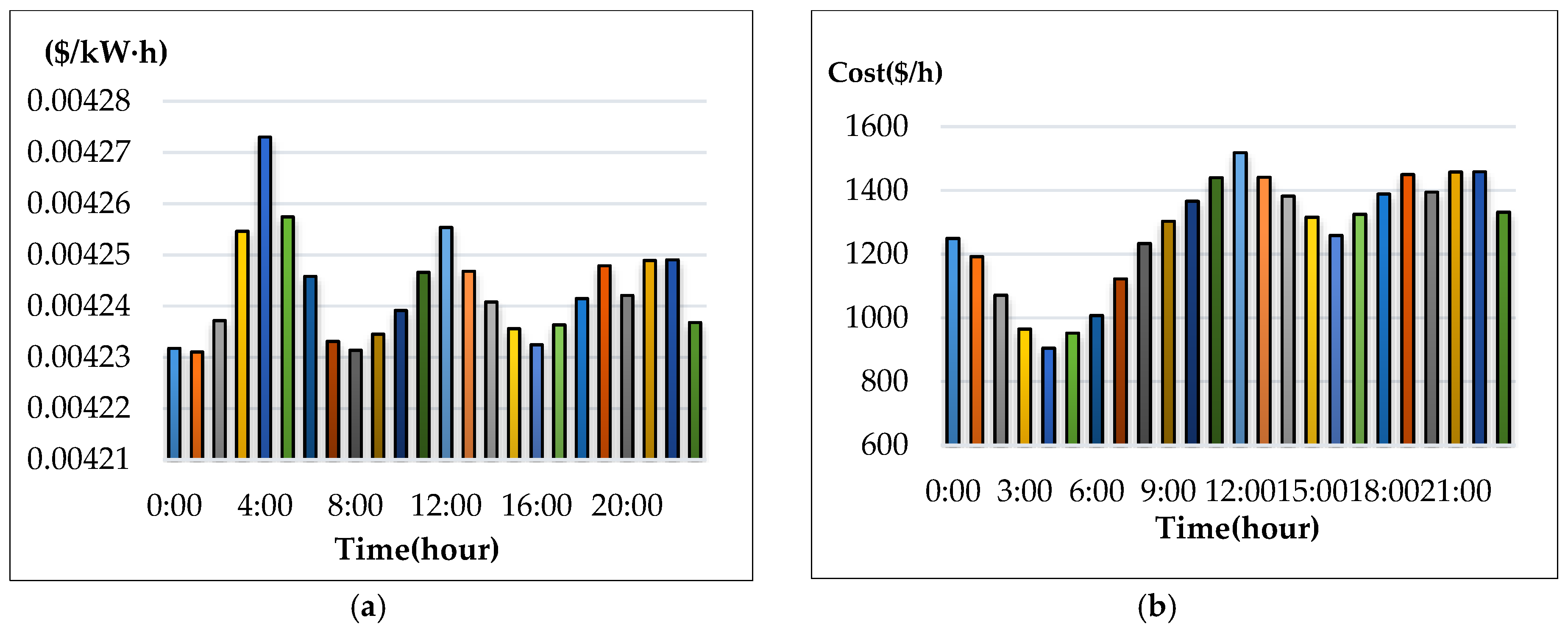
| Bus No. | Traditional Lagrange Multiplier (A) | Proposed Approach (B) | Error % |
|---|---|---|---|
| Generation (MW) | Generation (MW) | |1 − B/A| × 100 | |
| 1 | 160.450 | 160.460 | 0.0062 |
| 2 | 68.803 | 68.810 | 0.0102 |
| 6 | 39.567 | 39.550 | 0.0430 |
| Total cost ($/h) | 1137.7 | 1137.7 | 0.0000 |
| Real power loss (MW) | 9.82 | 9.82 | 0.0000 |
| λ | 405.4473 | 405.4590 | 0.0029 |
| CPU execution time (s) | 0.188 | 0.047 | - |
© 2016 by the authors; licensee MDPI, Basel, Switzerland. This article is an open access article distributed under the terms and conditions of the Creative Commons Attribution (CC-BY) license (http://creativecommons.org/licenses/by/4.0/).
Share and Cite
Huang, W.-T.; Yao, K.-C.; Wu, C.-C.; Chang, Y.-R.; Lee, Y.-D.; Ho, Y.-H. A Three-Stage Optimal Approach for Power System Economic Dispatch Considering Microgrids. Energies 2016, 9, 976. https://doi.org/10.3390/en9110976
Huang W-T, Yao K-C, Wu C-C, Chang Y-R, Lee Y-D, Ho Y-H. A Three-Stage Optimal Approach for Power System Economic Dispatch Considering Microgrids. Energies. 2016; 9(11):976. https://doi.org/10.3390/en9110976
Chicago/Turabian StyleHuang, Wei-Tzer, Kai-Chao Yao, Chun-Ching Wu, Yung-Ruei Chang, Yih-Der Lee, and Yuan-Hsiang Ho. 2016. "A Three-Stage Optimal Approach for Power System Economic Dispatch Considering Microgrids" Energies 9, no. 11: 976. https://doi.org/10.3390/en9110976






